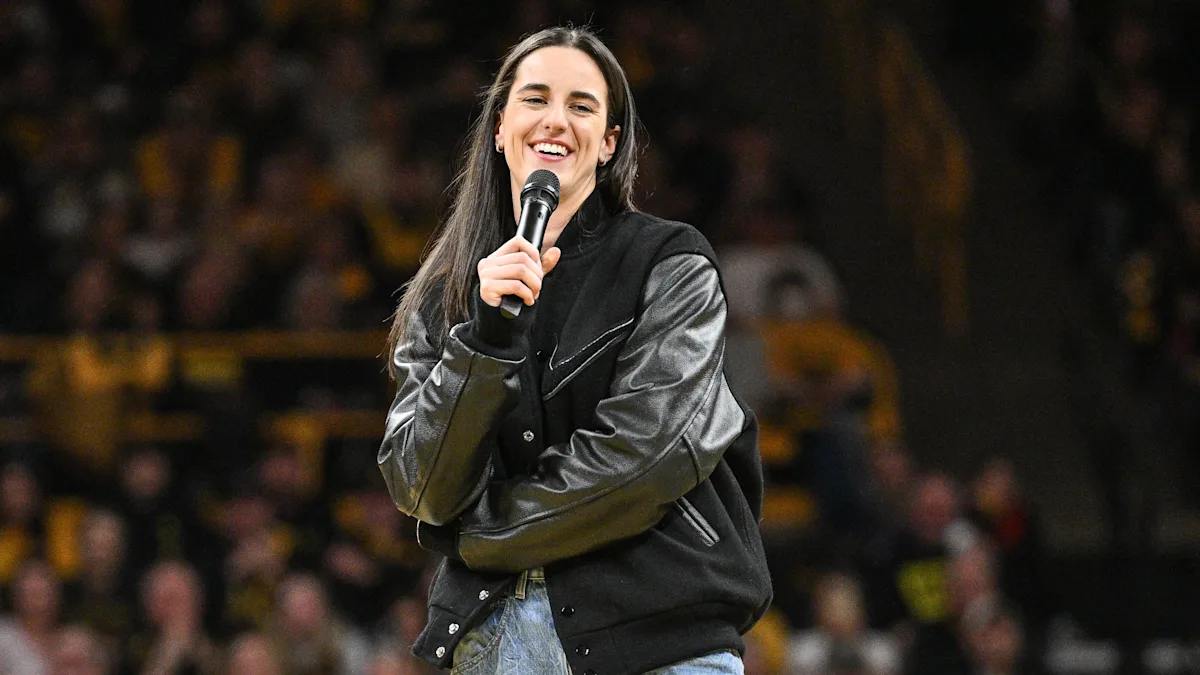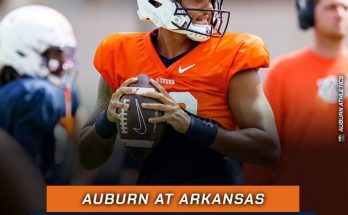Fever Supporters Observe a Change in Caitlin Clark’s Physical Look During Her Speaking Engagement
Caitlin Clark, the standout guard for the Indiana Fever, has always been a player to watch. Whether draining deep three-pointers, dishing out assists, or electrifying the crowd with her court vision, she has continuously dominated the game at every level. However, recent public appearances and speaking engagements have drawn attention not only to her skills but also to noticeable changes in her physical appearance. Fans and analysts alike have pointed out her increased muscularity, particularly in her upper body, leading to widespread discussion and admiration.
This transformation, while aesthetic to some observers, is primarily a reflection of Clark’s dedication to improving her game. Strength training, endurance work, and a heightened focus on physicality have all contributed to her evolving physique. But what does this mean for her performance in the WNBA, and how does this transformation compare to other elite athletes who have made similar physical strides?
A Public Reaction: Social Media Buzz
Clark’s recent appearance at a Big Ten Tournament game, where she supported her alma mater, the Iowa Hawkeyes, set off a wave of reactions. A photo taken by sports photographer Bri Lewerke highlighted her visibly toned arms, and within hours, the image circulated widely on social media. Fans quickly took to platforms like Twitter, Instagram, and Reddit to share their thoughts, with many praising her increased strength.
Comments such as “She’s ready to dominate the league next season,” and “Caitlin’s putting in the work, and it shows” flooded her posts. Others humorously referred to her as “Muscle Mommy” and made playful remarks about the “gun show” she displayed.
While some fans focused on the aesthetic aspect of her transformation, others speculated on its potential impact on her game. “She’s going to be able to finish through contact so much better now,” one comment read, highlighting the direct benefits of increased strength for a guard in a physically demanding league like the WNBA.
Why the Physical Transformation?
While Clark’s skill set has always been undeniable, even the most talented players in the world must adapt and evolve to remain at the top. After her rookie season, where she set multiple records and was crowned WNBA Rookie of the Year, Clark reflected on areas where she could improve. One of the key takeaways was the need to be more physically dominant, especially in her midrange game and ability to finish at the rim.
In response, Clark and her training team implemented an intensive offseason program focused on strength training, agility drills, and endurance exercises. The goal? To prepare her for the physicality of professional women’s basketball, where bigger, stronger defenders routinely test offensive players.
Strengthening her body isn’t just about aesthetics—it’s about durability and effectiveness. Stronger legs provide better balance, a more robust core enhances stability while dribbling and absorbing contact, and increased upper-body strength allows for better shooting range and defensive presence.
Clark’s offseason training has reportedly included:
- Weightlifting – A focus on compound movements such as squats, deadlifts, and bench presses to build overall strength.
- Explosive Training – Exercises like box jumps, medicine ball throws, and agility ladders to improve quickness and explosiveness.
- Endurance Work – Long-distance running, sprints, and pool workouts to enhance cardiovascular fitness and game stamina.
- Skill-Specific Drills – Focusing on shooting through contact, finishing at the rim, and refining footwork in one-on-one situations.
The Importance of Strength in the WNBA
The WNBA is one of the most physically demanding basketball leagues in the world. Unlike in college, where the talent disparity can be significant, every player in the league is an elite athlete. This means Clark is consistently facing defenders who are stronger, faster, and more experienced.
For a guard like Clark, who thrives on creating space, taking deep shots, and driving to the basket, strength plays a crucial role. Defenders will attempt to bump her off course, contest her shots with physicality, and body her up on the perimeter. Increased strength will allow her to absorb this contact without losing balance or effectiveness.
Looking at past WNBA legends, many of them have undergone similar transformations to extend their careers and improve their game. Players like Diana Taurasi, Sue Bird, and Candace Parker have all credited offseason strength training as a key factor in their longevity and success.
How Will This Impact Her Game?
With a more physically dominant frame, Clark is likely to see improvements in multiple facets of her game:
- Better Finishing at the Rim – One of the biggest adjustments from college to the WNBA is the level of interior defense. With added strength, Clark will be able to finish through contact more effectively, leading to higher shooting percentages in the paint.
- Increased Stamina and Durability – The WNBA schedule is grueling, with frequent back-to-back games and travel. Strength training doesn’t just build muscle; it also enhances endurance and helps prevent injuries.
- More Effective Defense – A stronger frame allows for better defensive positioning, particularly when fighting through screens or bodying up against stronger guards.
- Deeper Shooting Range – While Clark is already known for her ability to shoot from virtually anywhere on the court, increased core and upper-body strength could further extend her range, making her an even bigger threat beyond the arc.
- Leadership by Example – Clark’s work ethic and dedication set a precedent for her teammates. When a star player commits to getting better in every possible way, it often inspires others to do the same.
Comparisons to Other Elite Athletes
Clark’s transformation is reminiscent of several elite athletes who prioritized strength training to take their game to new heights.
- Stephen Curry (NBA) – Coming into the league, Curry was known as a sharpshooter, but early injuries and physical limitations prompted him to overhaul his training regimen. By increasing his strength and core stability, he became one of the most dominant guards in NBA history.
- Serena Williams (Tennis) – Williams’ dominance in women’s tennis was due in large part to her commitment to fitness and strength training, allowing her to overpower opponents and maintain peak performance for decades.
- Kobe Bryant (NBA) – Known for his relentless work ethic, Bryant continuously adjusted his body composition throughout his career to optimize performance, particularly after injuries.
Clark’s Mindset and the Road Ahead
Beyond the physical transformation, one of Clark’s most defining traits is her relentless competitive nature. She has spoken openly about her desire to be the best and her willingness to do whatever it takes to reach that goal.
Her evolution into a more physically dominant player is just one step in what promises to be a long and successful career. With the WNBA season approaching, fans, analysts, and opponents alike will be watching closely to see how her enhanced physique translates onto the court.
Clark’s offseason work speaks volumes about her dedication—not just to personal success, but to elevating the Indiana Fever as a team. With a young, talented roster and a star player who refuses to settle, the Fever have the potential to become one of the most exciting teams in the league.
Caitlin Clark’s transformation is about more than just aesthetics—it’s a strategic evolution designed to elevate her game and ensure long-term success. Her commitment to physical training reflects her broader ambition to be one of the greatest players in the game.
As fans eagerly anticipate her return to the court, one thing is clear: Caitlin Clark is stronger, sharper, and more determined than ever. Her journey is far from over, but with her work ethic and dedication, the future of women’s basketball looks brighter with her in it.



